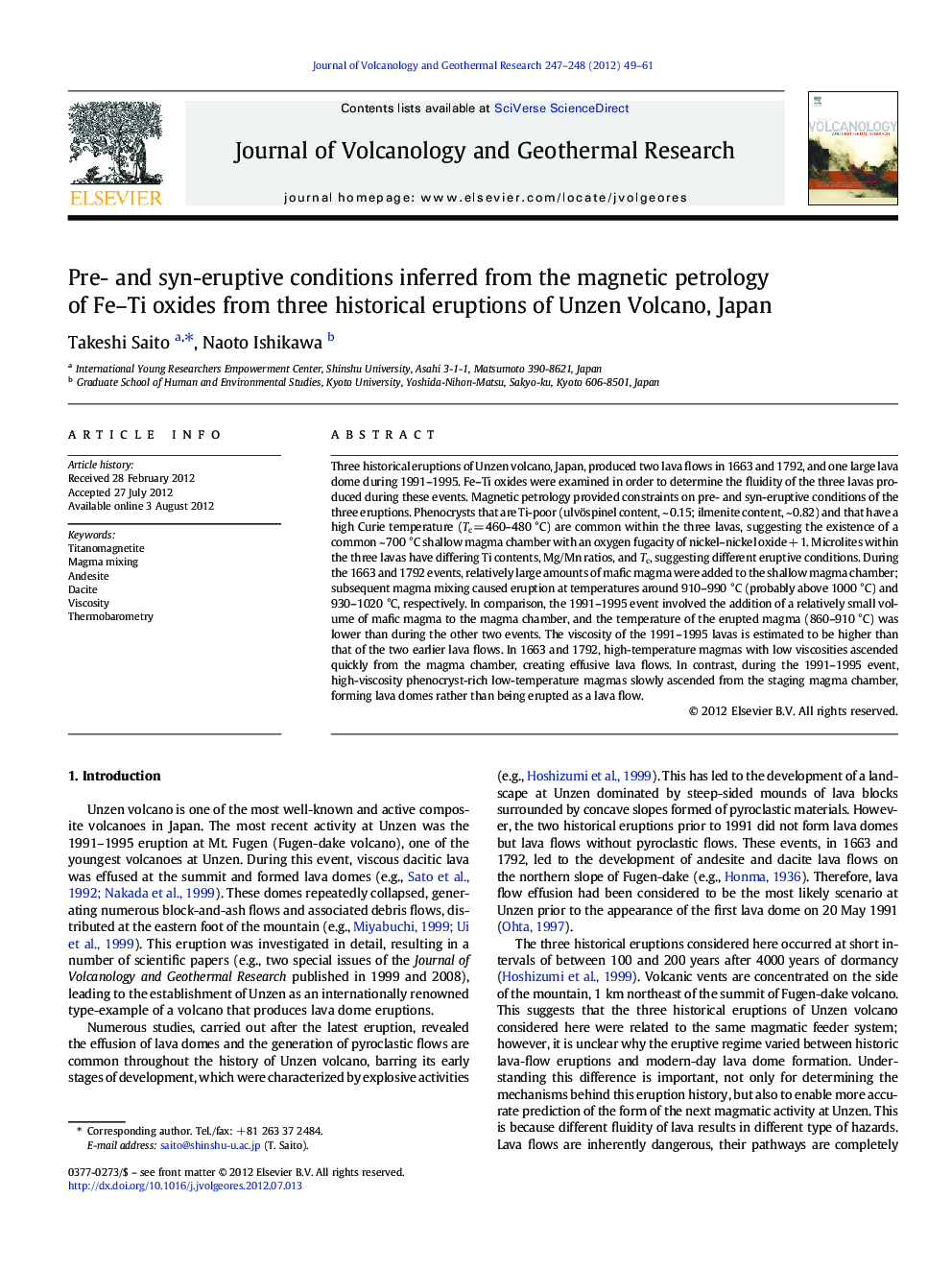| کد مقاله | کد نشریه | سال انتشار | مقاله انگلیسی | نسخه تمام متن |
|---|---|---|---|---|
| 4713662 | 1638373 | 2012 | 13 صفحه PDF | دانلود رایگان |

Three historical eruptions of Unzen volcano, Japan, produced two lava flows in 1663 and 1792, and one large lava dome during 1991–1995. Fe–Ti oxides were examined in order to determine the fluidity of the three lavas produced during these events. Magnetic petrology provided constraints on pre- and syn-eruptive conditions of the three eruptions. Phenocrysts that are Ti-poor (ulvöspinel content, ~ 0.15; ilmenite content, ~ 0.82) and that have a high Curie temperature (Tc = 460–480 °C) are common within the three lavas, suggesting the existence of a common ~ 700 °C shallow magma chamber with an oxygen fugacity of nickel–nickel oxide + 1. Microlites within the three lavas have differing Ti contents, Mg/Mn ratios, and Tc, suggesting different eruptive conditions. During the 1663 and 1792 events, relatively large amounts of mafic magma were added to the shallow magma chamber; subsequent magma mixing caused eruption at temperatures around 910–990 °C (probably above 1000 °C) and 930–1020 °C, respectively. In comparison, the 1991–1995 event involved the addition of a relatively small volume of mafic magma to the magma chamber, and the temperature of the erupted magma (860–910 °C) was lower than during the other two events. The viscosity of the 1991–1995 lavas is estimated to be higher than that of the two earlier lava flows. In 1663 and 1792, high-temperature magmas with low viscosities ascended quickly from the magma chamber, creating effusive lava flows. In contrast, during the 1991–1995 event, high-viscosity phenocryst-rich low-temperature magmas slowly ascended from the staging magma chamber, forming lava domes rather than being erupted as a lava flow.
► Eruptive conditions of three Unzen eruptions were constrained by magnetic petrology.
► Common oxide phenocrysts indicated the existence of common shallow magma chamber.
► Amount of mafic magma influenced eruptive conditions, causing different viscosity.
► Different magmatic conditions resulted in different modes of eruption at Unzen.
Journal: Journal of Volcanology and Geothermal Research - Volumes 247–248, 1 December 2012, Pages 49–61